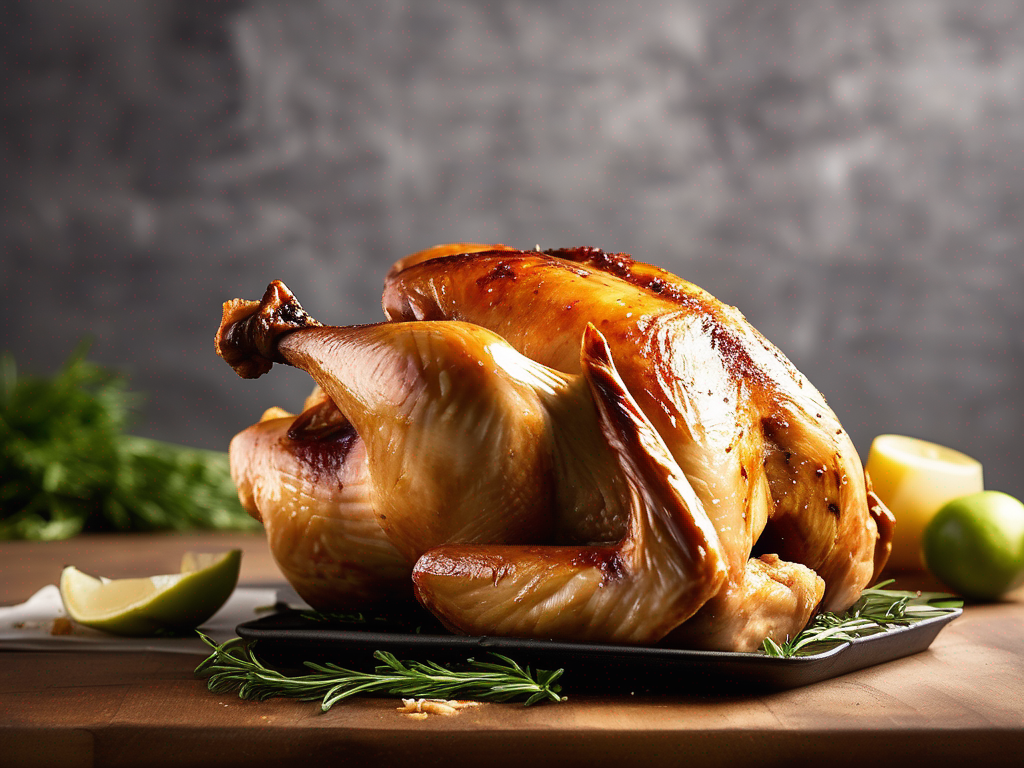
Signs that Pre Cooked Rotisserie Chicken has Gone Bad
Get Your Free Food Safety Cheat Sheet
30 most common foods with instant answers. Print it and stick it on your fridge—completely free!
Signs that Pre Cooked Rotisserie Chicken has Gone Bad
Rotisserie chicken is a popular and convenient choice for many households, providing a quick and tasty meal option. However, like any perishable food item, it is essential to pay attention to signs that indicate the chicken may have gone bad. In this blog post, we will discuss the key indicators that your pre-cooked rotisserie chicken may be spoiled and should not be consumed. (Pre cooked rotisserie chicken)
Understanding the Shelf Life of Pre Cooked Rotisserie Chicken
Before delving into the signs of spoilage, it is crucial to understand the typical shelf life of pre-cooked rotisserie chicken. When stored properly in the refrigerator at or below 40°F (4°C), rotisserie chicken can generally last for 3 to 4 days. Freezing can extend its shelf life to up to 4 months. However, these are general guidelines, and factors such as storage conditions and handling can affect the chicken's freshness.
Proper Storage of Pre Cooked Rotisserie Chicken
To maximize the shelf life of pre-cooked rotisserie chicken and maintain its quality, follow these storage tips:
- Refrigeration: Store the chicken in the refrigerator within two hours of purchase or preparation.
- Storage Containers: Transfer the chicken to a clean, airtight container before refrigerating.
- Labeling: Clearly label the container with the date of purchase or preparation to track freshness.
- Temperature: Keep the refrigerator temperature at or below 40°F (4°C) to slow bacterial growth.
Now, let's explore the signs that your pre-cooked rotisserie chicken may have gone bad and should be discarded.
Signs of Spoiled Pre Cooked Rotisserie Chicken
-
Unpleasant Odor:
- A foul or sour smell is a clear indication that the chicken has spoiled.
- If the chicken emits a strong, pungent odor, it is best to discard it immediately.
-
Change in Color:
- Fresh rotisserie chicken typically has a golden-brown color.
- If you notice any greenish or gray spots on the chicken, it is a sign of spoilage.
-
Texture Changes:
- Spoiled chicken may feel slimy or sticky to the touch.
- Any noticeable changes in texture, such as a mushy or slimy consistency, indicate spoilage.
-
Visible Mold:
- Mold growth on the chicken is a definite sign of spoilage.
- Discard the chicken if you see any patches of mold, as consuming moldy food can lead to foodborne illness.
-
Off Taste:
- If the chicken tastes sour, bitter, or generally off, it is best to stop eating it immediately.
- Trust your taste buds and do not consume chicken that tastes unpleasant.
Safety Tips for Handling Pre Cooked Rotisserie Chicken
In addition to recognizing signs of spoilage, here are some general safety tips for handling pre-cooked rotisserie chicken:
- Avoid Cross-Contamination: Use separate utensils and cutting boards for raw and cooked chicken to prevent cross-contamination.
- Reheat Properly: When reheating rotisserie chicken, ensure it reaches an internal temperature of 165°F (74°C) to kill any bacteria.
- Store Leftovers Promptly: If you have leftovers, refrigerate them within two hours to prevent bacterial growth.
By following these safety tips and being vigilant for signs of spoilage, you can enjoy your pre-cooked rotisserie chicken safely and deliciously.
Conclusion
In conclusion, pre-cooked rotisserie chicken is a convenient meal option that can be enjoyed safely when stored and handled correctly. By understanding the signs of spoilage, such as changes in odor, color, texture, and taste, you can ensure that your chicken remains fresh and safe to eat. Remember to follow proper storage guidelines and safety tips to maximize the shelf life of your rotisserie chicken and minimize the risk of foodborne illness. Stay informed, stay safe, and enjoy your meals with peace of mind! (Pre cooked rotisserie chicken)
Authoritative Food Safety References
These agencies and university labs inform every tip and health precaution we publish.
USDA FoodKeeper – Cold Storage Guidelines
Official refrigerator, freezer, and pantry timelines maintained by the U.S. Department of Agriculture.
Visit USDA FoodKeeperFDA Produce Safety Rule & Grower Guidance
Field-to-fridge handling practices that prevent contamination of fruits, vegetables, and leafy greens.
Visit FDA Produce SafetyCDC Foodborne Illness Prevention Hub
Surveillance-backed guidance on pathogens, symptoms, and steps to reduce foodborne illness risk.
Visit CDC Food SafetyUC Davis Postharvest Technology Center
University research detailing optimal storage atmospheres for produce after harvest.
Visit UC Davis PostharvestPenn State Extension – Home Food Preservation & Safety
Peer-reviewed extension bulletins on safe canning, chilling, and reheating practices.
Visit Penn State ExtensionGet Your Free Food Safety Cheat Sheet
30 most common foods with instant answers. Print it and stick it on your fridge—completely free! Want more? Upgrade to the complete guide with 70+ foods.
Scan your food directly and get instant safety info using our AI-powered camera feature.